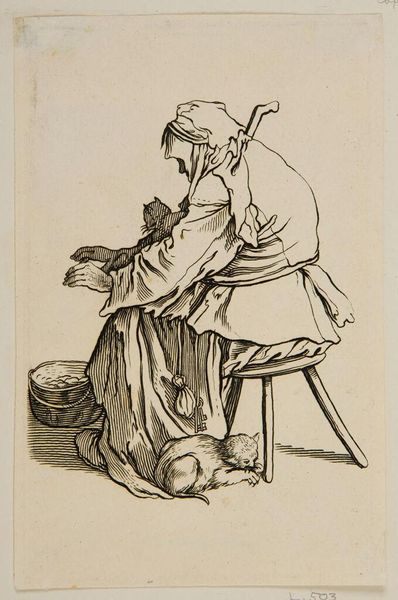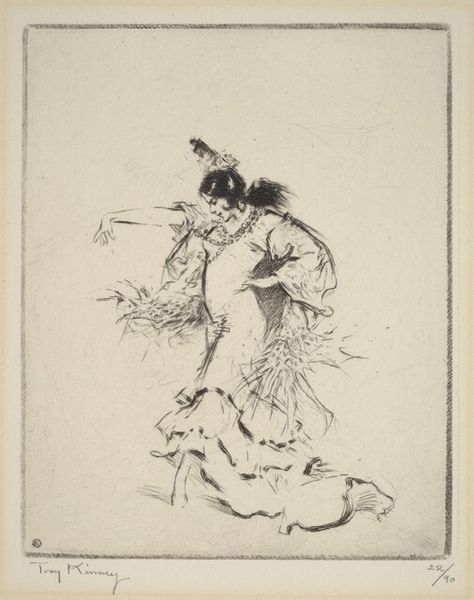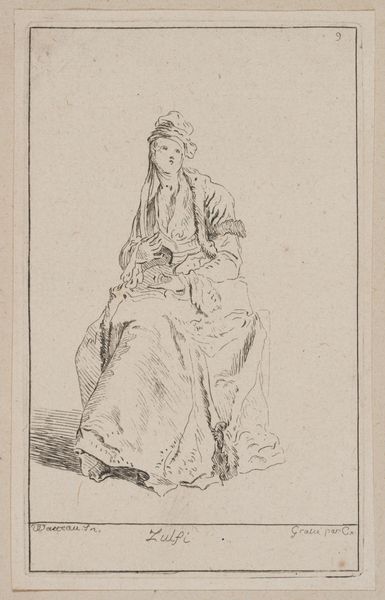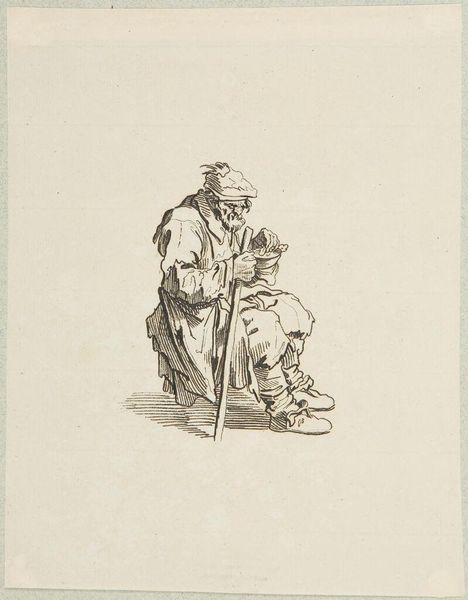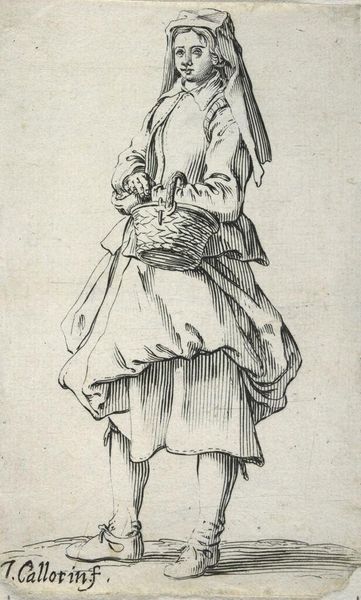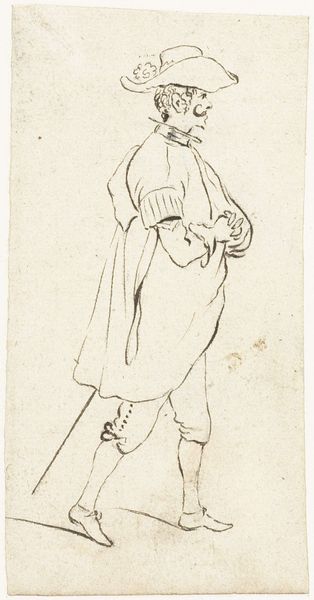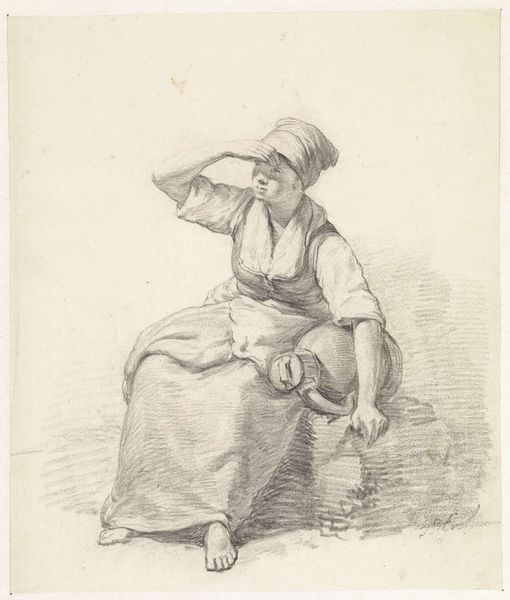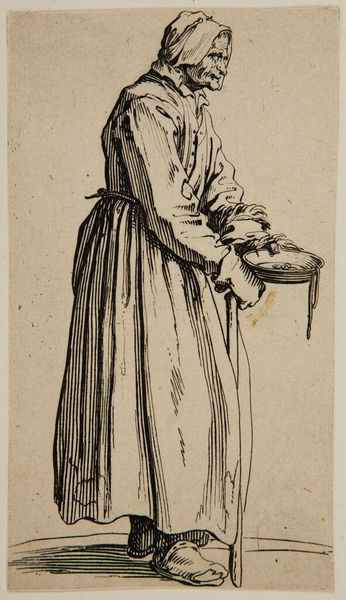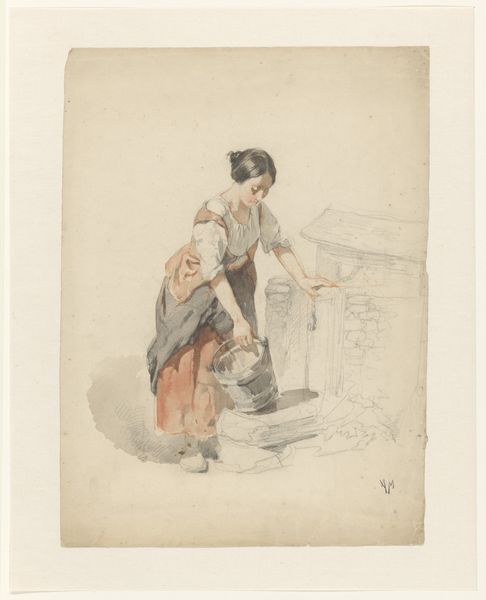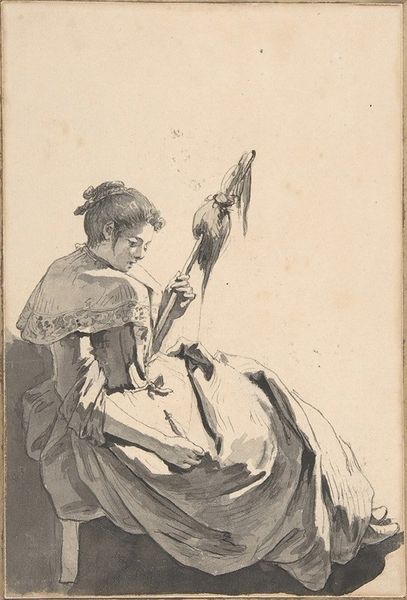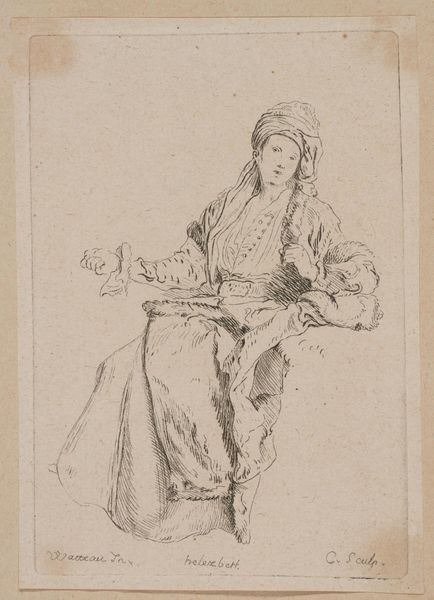
Copyright: CC0 1.0
Curator: This is Adrian Ludwig Richter's "Old Woman with Cats, after Callot," housed here at the Harvard Art Museums. It feels so intimate, doesn't it? Editor: It's odd, really. The squalor is clear, but the etched lines create such a delicate, almost whimsical atmosphere. The labor of representation is visible, transforming hardship into something almost palatable. Curator: It speaks to Richter's engagement with older printmaking traditions. Callot was a master etcher, and this piece is a conscious echo. How does Richter's engagement transform the subject? Editor: It feels softened. Callot could be so brutally honest; Richter seems to add a layer of sentimentality, maybe even a touch of idealization, which I find comforting, like a hazy memory. Curator: Perhaps. It's worth considering the social context. Richter, working in the 19th century, was part of a broader movement romanticizing the past, and sometimes ignoring harsh realities in favor of comforting narratives. Editor: Still, there's a universal appeal in seeing this woman surrounded by her companions. It's a cozy corner of the world, rendered in fine lines. Curator: It's precisely in those delicate lines that we find a story of artistic lineage, social consciousness, and the enduring power of the humble etching. Editor: A reminder that even in monochrome, stories can bloom with complexity.
Comments
No comments
Be the first to comment and join the conversation on the ultimate creative platform.

